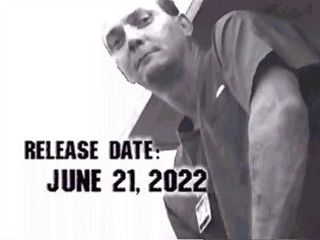1999
OFFENDER POPULATION JUNE 30, 1999
INMATES: 68,599
SUPERVISED: 150,340
INMATES: 68,599
SUPERVISED: 150,340
Florida Governor Jeb Bush assumes office in January and appoints Michael W. Moore as Secretary of the Department of Corrections on January 5, 1999. Moore will remain in office through January 6, 2003.

Michael W. Moore
 Outrage surrounding the abduction, rape and murder of 9-year-old Jimmy Ryce leads to the Jimmy Ryce Involuntary Civil Commitment for Sexually Violent Predators’ Treatment and Care Act, with the goal of protecting children from experiencing such violence. The Act was passed unanimously by the Florida Legislature and signed into law by Governor Lawton Chiles, becoming effective on January 1, 1999. The Act allows the state to commence involuntary civil commitment proceedings against an inmate near the end of his prison sentence if the state can show that the inmate poses a “menace to the health and safety of others.” The law provides for the involuntary commitment of persons who are found to be “sexually violent predators” through a judicial process. The Department of Corrections is required to give written notice and to provide records to the Department of Children and Families in advance of the release of an inmate convicted of a “sexually violent offense,” and DCF is required to determine if the person meets the definition of a sexually violent predator, possibly subject to civil commitment by the court for long-term care and treatment. As horrific as his death was, Jimmy Ryce’s legacy will be that untold numbers of children will be saved from a similar fate.
Outrage surrounding the abduction, rape and murder of 9-year-old Jimmy Ryce leads to the Jimmy Ryce Involuntary Civil Commitment for Sexually Violent Predators’ Treatment and Care Act, with the goal of protecting children from experiencing such violence. The Act was passed unanimously by the Florida Legislature and signed into law by Governor Lawton Chiles, becoming effective on January 1, 1999. The Act allows the state to commence involuntary civil commitment proceedings against an inmate near the end of his prison sentence if the state can show that the inmate poses a “menace to the health and safety of others.” The law provides for the involuntary commitment of persons who are found to be “sexually violent predators” through a judicial process. The Department of Corrections is required to give written notice and to provide records to the Department of Children and Families in advance of the release of an inmate convicted of a “sexually violent offense,” and DCF is required to determine if the person meets the definition of a sexually violent predator, possibly subject to civil commitment by the court for long-term care and treatment. As horrific as his death was, Jimmy Ryce’s legacy will be that untold numbers of children will be saved from a similar fate.
Jimmy’s memory lives on through the Jimmy Ryce Center https://jimmyryce.org/, which assists families in finding their abducted and lost children by providing resources ranging from AKC bloodhounds to age-appropriate educational tools.
In July, the 10-20-Life gun law and the Three Strikes Violent Offenders Act are established.
"The Rock" housing facility at Raiford is demolished. It has been unused for years.
Gulf Correctional Institution Annex (Wewahitchka, FL) opens.
Electrocution is debated, resulting in the added choice of death by lethal injection as an option for the condemned.
The Department develops screens on the Offender Based Information System (OBIS) to identify and track support staff positions; enhance the offender contact and case note screens to help probation officers and supervisors be more effective in the supervision of offenders; works with the Florida Department of Law Enforcement (FDLE) to place sex offender/predator photographs and information on the FDLE sex offender web site; assists several outside agencies (Children and Family Services, Department of Revenue, Office of Statewide Prosecution) in collecting court-ordered obligations and arranging for access to the department's database; works with the Department of Highway Safety and Motor Vehicles (DHSMV) to ensure that sex offenders/predators comply with Senate Bill 1992, which requires them to register with DHSMV.
The Florida Supreme Court rules in Gomez vs. Singletary that thousands of inmates who were sentenced after 1983 are retroactively eligible for early release credits. The Department appeals the decision to the U.S. Supreme Court, which declines to stay the Florida Supreme Court's decision. The decision results in the immediate release of several hundred inmates, and the eventual release of more than 8,000 inmates over the next several years. "If it were up to us, no prisoners would be released before their sentences are complete. We have no choice but to obey the court's order," said Department of Corrections Secretary Michael W. Moore.
Administrative Service Centers are established in June, 1999, to consolidate all administrative support functions for institutional and community corrections field operations.
DEATH ROW INMATE FRANK VALDEZ DIES

Frank Valdez
Late Saturday morning on July 17, Death Row inmate Frank Valdez threatens an officer and a five-member "extraction team" is dispatched to his cell on the X-Wing, the solitary confinement unit that houses the most disruptive inmates at Florida State Prison in Starke, Florida. Valdez is subdued and taken to the prison clinic for a post use-of-force physical. He is subsequently returned to X-Wing. In-house medical staff and paramedics are called to Florida State Prison at 3:25 p.m. Valdez is pronounced dead at Shands Hospital in Starke about 4:18 p.m. The Florida Department of Law Enforcement is notified the same day and begins a criminal investigation in conjunction with the Inspector General's Office.
Over the months that follow, nine department employees will be charged with crimes related to Valdez' death ranging from second degree murder to official misconduct. All nine are dismissed by the Department because they have violated department rules including excessive and/or unnecessary use of force and falsified reports, according to FDC spokeswoman Yolanda Murphy.
Jurors acquit one officer in 2000 and three more in February 2001. In May 2002, State Attorney Bill Cervone drops charges against the remaining defendants, citing the two previous acquittals and problems with keeping the trial in Bradford county, where numerous prisons are located. The men still face civil lawsuits brought by Valdez' family and ex-wife as well as potential Federal prosecution for civil rights violations.
Some of the changes implemented by the department as a result of the Valdez incident include the development of a policy whereby use of force and cell extractions are video recorded, the installation of cameras on X-Wing at Florida State Prison, and the review of all Use of Force reports by the Inspector General's Office.
Valdez was on Death Row for the 1987 murder of Correctional Officer Fred Griffis. Valdez shot him when Griffis refused to give Valdez the keys to a vehicle housing an inmate Valdez was trying to help escape. (The inmate had been taken outside the prison for a doctor's visit.) The inmate did not escape and Valdez was found guilty of the officer's murder and put on Death Row.
The average percentage of sentence served by inmates released as of June 30 is 77.9%, continuing its steady climb.
Over 4,000 Correctional Probation Officers and staff supervise more than 150,000 offenders. Correctional Probation Officers collect the following fees from offenders, when applicable: cost of supervision fees, victim restitution and court fines and costs. Payments collected during FY 1998-99 total $86,619,459. Correctional Probation Officers also conduct more than 200,000 investigations each year, including pre- and post-sentence investigations.
The Corrections Data Center (CDC), formerly the Justice Data Center, successfully moves into a newly constructed computer operations facility within the Central Office Building of the Department of Corrections. The new facility has been designed and built in a little over a year and is approximately 1,500 square feet smaller than the previous facility (in the basement of the Florida Supreme Court Building). This reduction in size was possible because of advances in technology towards smaller, but much more powerful and efficient computers. All of the data center's computers and equipment are upgraded with the move, including the addition of robotics to manage data storage tapes. The move is accomplished during a single weekend and the department's critical information systems are fully operational the following Monday when staff arrive in their offices.

CDC operations control center.

CDC network management and control area.

Moving the Corrections Data Center to its new location was accomplished in one weekend.

10-20-Life
From Video: John was convicted for multiple felonies, including armed robbery.
View the Video
4.0M B Quicktime
8.2 MB AVI

From Video: "There's nothing good about prison."

From Video: John got 20 years under the 10-20-Life Law.
- 1821-1845
- 1868-1876
- 1877-1895
- 1900-1919
- 1921
- 1922-1924
- 1927
- 1928-1931
- 1932 | CHAPMAN
- 1933-1935
- 1936-1939
- 1940-1945
- 1946-1949
- 1950-1955
- 1956-1961
- 1962 | WAINWRIGHT
- 1963-1965
- 1966-1969
- 1970-1975
- 1976-1979
- 1980-1986
- 1987 | DUGGER
- 1988-1990
- 1991 | SINGLETARY
- 1992-1995
- 1996-1998
- 1999 | MOORE
- 2000-2002
- 2003 | CROSBY
- 2004-2005
- 2006 | MCDONOUGH
- 2007
- 2008 | MCNEIL
- 2009-2010
- 2011 | BUSS
- 2011 | TUCKER
- 2012 | CREWS
- 2013-2014
- 2014 | JONES
- 2015-2018
- 2019 | INCH
- 2020-2021
- 2021 | DIXON
- 2022-Today
- Population Summary Table

